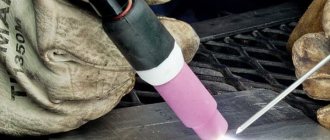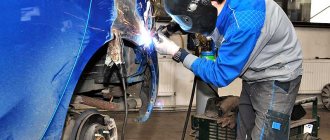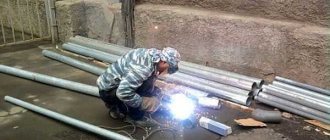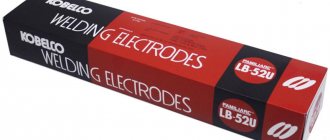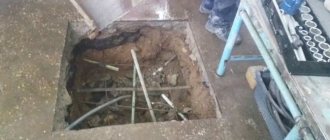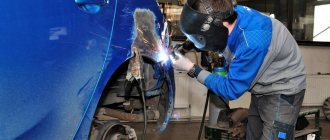The car body is an important part of the vehicle, like other components or parts. The body is at risk, being a buffer in contact with the external environment - the inevitable mechanical impact of surrounding objects, other vehicles and objects in road accidents is guaranteed to lead to breakdowns and disruption of the shape of parts and loss of external attractive appearance. Don’t forget about the aggressive influence of the environment - moisture, dirt and salt cause corrosion spots and cracks. In all of the above cases, car body repair is required.
What is car body welding
Welding a car body is a difficult process, regardless of the type of welding, be it arc, spot or other type. In any case, she needs an excellent welding machine for working on car upholstery, great skill and professionalism of the welder - all this combined will provide a good result.
Lack of proper experience and a suitable welding unit will not make it possible to obtain precision and fineness of the seam.
Work with welding on the body must be carried out in a room specially designed for this purpose, where there is an outlet with a connection to the network with the necessary components of frequency, current, voltage level, or a gas connection.
Welding the body yourself can be done only in uncomplicated situations and for restoration of the skin in places where the beauty of the seam does not play a big role.
Requirements for technology
There are three main types of vehicle layouts that can withstand operational and other loads:
- Based on a load-bearing frame to which mechanisms and casing are attached.
- A load-bearing body, which, while forming a protected useful volume, also serves as the basis for attaching machine components. The option is assigned to the vast majority of individual (passenger) cars.
- A combined option that includes both elements. Area of application: cargo and passenger transport, buses, special equipment.
The second category is the most “picky” . Even an experienced car service specialist will not always determine how loaded a particular element of the load-bearing body is.
Regardless of the layout, the following requirements apply to welding a car:
- Reliability. The strength of the repaired element (ideally) should not be inferior to the original one. If this is welding the exhaust system, the seams must be sealed.
- Seams and joints should not interfere with aesthetics. This is especially true for repairs in the area of the fender, doors, and hood.
- Repairs should not reduce performance or interfere with the normal operation of mechanisms.
All these tasks are complicated by the fact that the load-bearing body kit has a complex shape . Damage is sometimes inaccessible or poorly accessible for high-quality welding. The metal of car bodies is thin, less than a millimeter, welding it requires certain skills and special equipment.
Important! When using electric welding, even for very minor, simple repairs, be sure to disconnect the battery, as well as the electronic components of the car.
Subtleties of body welding
Most of the attached, protective parts of the machine have a relatively small thickness - 0.8-1 mm. Only the power sections, sills, side members, and cross beams reach 2 mm in thickness. Such differences show the difficulty of using the same type of welding to renew a car body.
Therefore, you will need to analyze the damage caused and outline the best properties of the future seam.
You also need to take into account the following aspects:
- Location of the defect. Affects the comfort of carrying out the work and the choice of welding method;
- The nature of the destruction is point-like, like a rupture or crack. This will affect the size of the welded seam;
- Need to apply a patch. Required for major damage to the body.
Having identified the form of damage, taking into account all the above-mentioned aspects, you can select a welding device. If the existing model does not meet the minimum technological requirements for carrying out the work, then it is advisable to contact a professional car service center.
Protection
Most welded joints are quickly “seized” by rust. To prevent this from happening, the seams are covered with protective primers and lubricants . During subsequent painting work, they are removed if necessary.
Heated parts, for example the welding of the muffler corrugation, exhaust pipe or manifold, are painted with heat-resistant paint.
The seams on the bottom of the car are covered with a protective cold primer based on bitumen, synthetic resins or plastic, and the cavities are filled with special sealants.
Where the damage was initially caused by body corrosion, increased demands are placed on protection. The most vulnerable in this regard are the thresholds; they need to be treated not only from the outside, but also from the inside, by pumping in a special compound.
Types of welding machines
- AC unit. Welding devices are popular among car owners, but their use has the following disadvantages: it takes time to master the welding device, the welded seams are of low quality due to the overall size of the device, then the electrode is not able to reach some areas. The device is capable of welding thick metal exceeding 5 mm. 3 mm iron is often used on the car body; as a result, the parts are burned through by this welding.
- An inverter is a device for repairing a body, suitable for quickly completing work, creating good quality welded seams, and for using the device in conditions of low voltage. Among the disadvantages: susceptibility to dust, expensive price for the unit, the thickness of the iron cannot be more than 3 mm.
- Carbon dioxide semi-automatic. Such a welding unit has the following advantages: it is possible to weld metals 0.8-6 mm. A thorough, high-quality weld is formed, when argon is used, non-ferrous metal parts can be restored, there is no need to maintain a non-disappearing arc. The disadvantages of a semi-automatic device include: decent weight and size, so the device can be used within the confines of a garage. The device is switched on using a socket.
Why is 80% of bodywork welding work done with spot and resistance welding?
The car body is one of the main parts and performs 2 main functions:
- Carrier - all attachments are attached to the car body, including the engine and chassis;
- Protective – provides protection for the driver and passengers in the event of a collision.
Almost any collision causes damage to the body. They can be divided into 3 categories:
- Minor damage - for example, dents on the door, fender, bumper. Such damage does not affect performance and is mainly of an aesthetic nature. They are often corrected using a spotter and a reverse hammer.
- Moderate damage – leads to a violation of the geometry of the body. In this case, the entire body element is replaced. It is cut out along the weld points and, using a spot welding machine, the new element is welded to its original place.
- Serious damage – in which the restoration of the body geometry is carried out on special stands. And in the case when the cost of materials and work exceeds the market value of the car itself, restoration is considered inappropriate and the car is sent for recycling.
In any case, after damage, the mechanical strength of the metal decreases. Car manufacturers provide recommendations for which damages to a body element can be restored without loss of properties, and for which damages the element needs to be replaced with a new one.
During repair work in auto repair shops, it is important to take these recommendations into account, otherwise it may lead to a decrease in the safety of the driver and passenger. Therefore, when carrying out a welding operation, it becomes necessary to use equipment that can effectively handle modern types of materials. And we will get acquainted with such equipment in the next section.
Welding a car body with a semi-automatic machine
Semi-automatic brewing with electrodes is the most acceptable type of equipment suitable for repairing technical equipment.
Carrying out welding using a semi-automatic machine in a passenger car makes it possible to approach any corner of the vehicle without additional difficulties to create a weld seam. There is no need for extensive knowledge in the field of welding or experience in the work.
- The technical design of a semi-automatic welding machine is simple: for its operation, the same current transformer is used as in all similar equipment; the only feature is the suitable consumable raw materials.
- Brewing with a semi-automatic device is done using welded wire d: 0.2-2 mm and carbon dioxide. Often the wire has a copper coating, which provides good electrical contact.
- Carbon dioxide is needed to prevent oxidation processes, because it prevents hot metal from contacting oxygen. So, during the welding of the machine, carbon dioxide is used in a cylinder; the semi-automatic machine also needs a reducer to reduce the pressure.
The best result can be obtained if this unit is configured correctly. For semi-automatic welding at a service station, it makes it possible to adjust the current strength and wire transmission speed. Having achieved precise adjustment of the unit, this will make it possible to create strong seams invisible to the eye on the plane of the car body.
A craftsman without experience is advised to weld on a car muffler using an inverter. Only an experienced master can weld a muffler using electric welding using spot welding, without moving the electrode.
Preparation and setup
Before welding begins, the equipment is checked and adjusted.
These works are performed automatically by an experienced welder, taking just a few minutes. When operating an inverter, the polarity is pre-adjusted. Typically, thin metal is welded with reverse polarity, at which the part heats up less .
Then the electrode is selected, the cables are connected, and the power supply is connected.
Before cooking with a semi-automatic device, check the pressure at the outlet of the reducer of the carbon dioxide cylinder and adjust it if necessary.
Regardless of the welding device, the workplace must be equipped with ventilation. Make sure there is sufficient lighting. It will make work more convenient, improve quality, and reduce eye strain.
Pay attention to protecting other elements of the machine from possible damage . This applies to tires, interior trim, plastic, electrical wiring, etc.
Welding areas must be cleaned of paint and rust. If necessary, remove severely damaged parts.
To weld the muffler and repair other removable parts, it is better to dismantle them.
Welding with inverter
Nowadays, inverters are increasingly being used for welding work on bodies. This is a modernized, small and lightweight welding device, operating on modern elements and with its characteristic current conversion method.
It has low sensitivity to low current and provides easy arc starting.
- For a welder with minimal experience, inverter welding is a priority. Indeed, it is worth choosing an inverter for car repair, because only a child cannot master it.
- The electrodes used in the work process do not differ from consumable raw materials in classical welding. However, it is worth noting that, despite its simplicity, the results of welding with an inverter rarely have high-quality seams.
- Often the seams come out thick and uneven; due to unequal heating of the metal, distortions occur, even if you work with the device with skill. Therefore, the inverter welds inconspicuous places on the car body: in the trunk, under the wings and other places.
Before starting work, you need to adjust the current, focusing on how thick the parts and raw materials are, select an electrode and connect the ground terminal to the working plane.
When asked by car owners about the appropriate welding method for welding a car body, you can listen to specialists who advise using a semi-automatic machine with an electrode to restore body parts on prominent plots.
When the disturbances are in areas of the machine that are hidden from view, then an inverter is suitable. And to repair a car muffler on your own, it is better to resort to cold welding.
Types of connections
The connection is named depending on the location of the parts relative to each other.
- Overlap . The parts are superimposed on each other, or connected by another, invoice. In this case, welding is usually carried out on both sides to ensure reliable connection. This type of seam is used where increased strength is needed.
- Butt joints require precision. It is used where appearance is not so much important as strength.
- Fillet and T-welds can be used to weld parts that are connected at an angle.
According to their position in space, seams are divided into three types, any of which can be encountered during welding work on your car:
- Bottom - when parts lying on the ground, table or other structures are welded. The electrode is directed vertically or deviates at an angle of up to 15 degrees.
- Vertical or horizontal (wall) . The electrode is located horizontally, or at a slight angle, and is drawn horizontally or vertically.
- Ceiling , opposite to the bottom.
The latter is difficult to perform even for a qualified welder: you have to work overhead, the deposited metal tends to spill out of the seam. You have to deal with this when welding the underbody of a car with your own hands.


